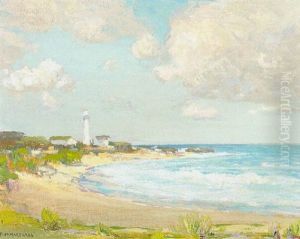Frank Howard Marshall Paintings
Frank Howard Marshall (1876-1949) was an English artist, known primarily for his watercolor paintings. He was born in the late 19th century, a period that saw the rise of Impressionism and Post-Impressionism, although Marshall's work was more traditional and less influenced by these avant-garde movements.
Marshall was educated in England, where he developed his skills in watercolor painting. He was part of the Royal Institute of Painters in Water Colours, an institution that promoted the art of watercolor painting in England. Throughout his career, Marshall painted a variety of subjects, including landscapes, still lifes, and portraits, displaying a keen eye for detail and a strong understanding of light and color.
Despite his talent, Marshall did not gain the same level of fame as some of his contemporaries. His work was appreciated by those who favored a more traditional approach to watercolor painting, as opposed to the experimental styles that were emerging at the time. Marshall's paintings were characterized by their delicate brushwork and subtle use of color, which captured the essence of the English countryside and other subjects with grace and charm.
Marshall's contributions to the field of watercolor painting were significant in maintaining the popularity of this medium during a time when oil painting was often considered more prestigious. His work continued to be exhibited throughout his life, and he maintained a modest but loyal following. Today, his paintings can be found in various art collections, and he is recognized for his role in preserving traditional watercolor techniques during a period of significant change in the art world.
Frank Howard Marshall passed away in 1949, leaving behind a legacy as a skilled watercolorist who valued the beauty of the English landscape and the quiet elegance that could be captured on paper with pigments and water.








